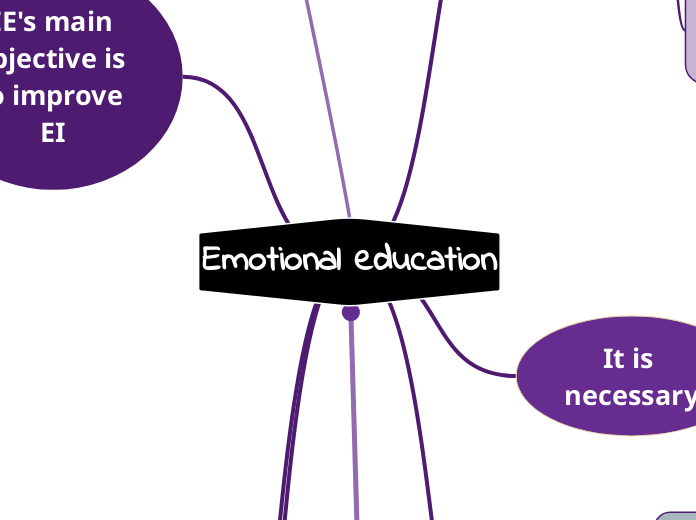Emotional education
History
5 precursors
Carl Rogers' counseling modelbtopic
The conceptualization of education
education proposed by Albert Ellis.
The mental hygiene movement
The psychological education movement
The character education movement
Two waves
1st wave Ellis' E E promotes emotional growth
2nd wave: two major focus on teaching an emotional curriculum, namely EE initiatives to promote SEL and EE initiatives to promote EI.topic
It is necessary
Skills demanded by the labor market. Improving I E in the population would allow countries to obtain benefits for individuals, communities and the communities
It is related to a positive state of mind that facilitates coping.
Tags
False Positive:
False Negative
Equivalence of groups
Profit score analysisundefinedundefined
Criteria for replication
Rational Emotive Behavioral
Rational Emotive Behavioral Therapy
(REBT)
Quasi-experimental research design.
Equivalent control group
EE's main objective is to improve EI
Evidence-based ES
Reiable
Evidence is obtained following guidelines
Quasi-experimental research design is applied.
ANCOVA for pretest and posttest data
Replicating the data with multinive growth curve models
In the evaluation of interventional analysis, a false negative is better than a false positive.
Assessment to promote SEL
Improve students' academic, behavioral academic, behavioral and personal adjustment of students,
Oms says SEL is life skills
Emotional and social competencies can be acquired outside of the formal school environment
Number of evidence-based programs that focus on environmental
environmental education principles are very few and far between.
Critical focus
SEL sometimes a set of specific variables
SEL do not support a comprehensive global construct such as EI.
SEL Inclusive term that includes emotional skills.
EE Evaluation
Researchers have developed two EE programs based entirely on Mayer and Salovey's AEI model.
entirely based on Mayer and Salovey's AEI model.
EI schooling is more feasible in adults than in children and adolescents.
Hodzic's meta-analysis included 24 studies based on interventions designed for ages 16 and older, and is based on an advanced statistical evaluation of the current literature.
Guidelines for EE design
Decalogue design recommendations
Program evaluation protocol
New steps forward
Why, what and how
EE recommendations for the school
